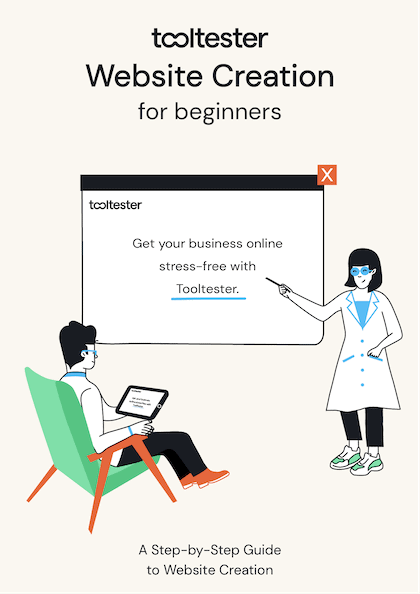Tooltester is supported by readers like yourself. We may earn an affiliate commission when you purchase through our links, which enables us to offer our research for free.
The best small business marketing tools will support rapid growth, even if you’re running the whole show by yourself.
We know from experience that running a small business is challenging. It’s all too easy to lose sight of the work that makes money when your to-do list never seems to shrink.
In this guide, we listed the best tools for small business marketing activities, from social media to internal communication, based on our own experience. These are our top picks for ease of use, low cost, and maximum impact – and we couldn’t live without them.
For more essential small business tools, sign up to the Tooltester newsletter. We’ll deliver recommendations right to your inbox, and all tools are tested and reviewed by our expert team.
Top Marketing Tools: What We Look For
We chose these tools based on 3 key criteria:
- They had to fit small businesses on a budget
- They all have time-saving features for founders
- The cost of ongoing subscriptions is manageable
Let’s dive in.
Best Small Business Marketing Tools
1. Zapier: Best for Marketing Automation
Starting a business can be challenging when all the admin is on you. Reducing that admin can help you to claw back time for the client work that will build your profits.
If this sounds good, Zapier will be your secret weapon. It lets you set up your own custom automations so that one app triggers actions in another.
For example, as you collect emails for your email marketing list, you can automatically send the contacts to your CRM. You can also connect lead forms to webinar providers to automate signups, or add those leads to specific segments of an email marketing list.
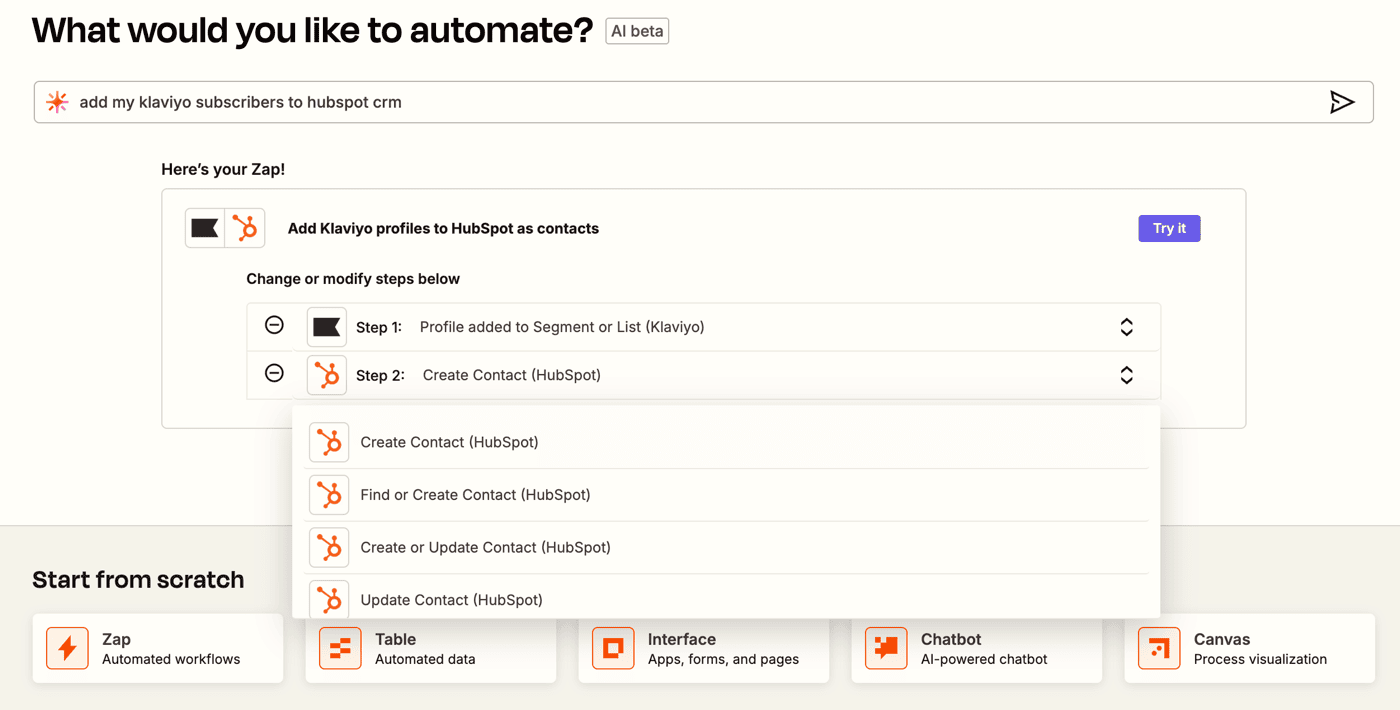
The best part? You can set up any automation without writing code. Whenever we need a new Zap, we use the AI builder and describe our goal. Zapier does a pretty good job of building what we need. From there, we just connect each step to the platform and the automation runs seamlessly.
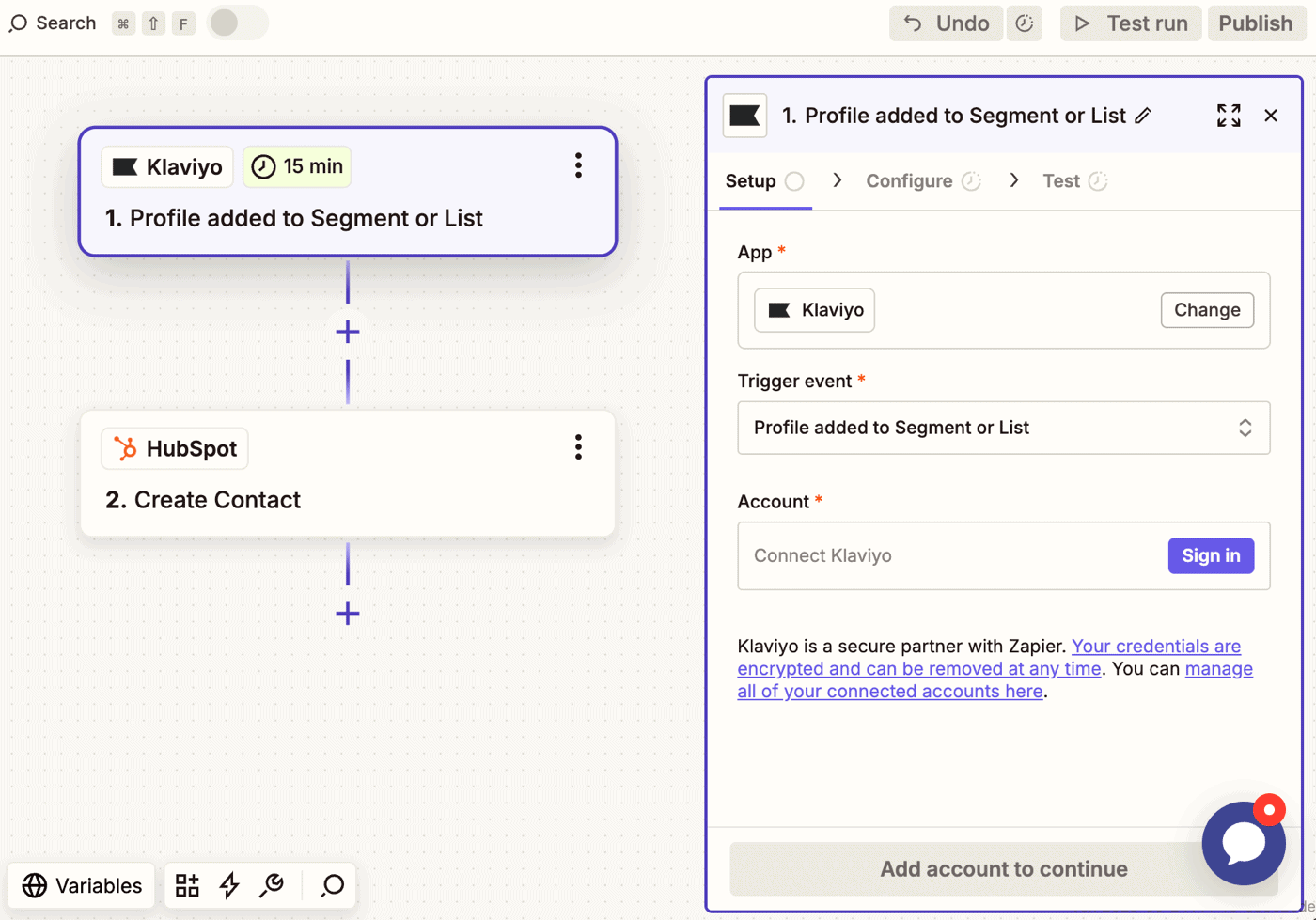
You can create unlimited automations. Zapier’s free plans allow you to complete 100 tasks each month.
Pros:
- No-code platform
- Connect 8,000+ apps in one platform
- GDPR-compliant
Cons:
- Limited task runs each month
- Costs build quickly with multistep Zaps
- Not as powerful as a full marketing automation platform
Pricing: Zapier lets you automate 100 tasks per month for free. You can spread this across as many Zaps (automations) as you want. Paid plans start at $19.99/ month and allow you to chain together multiple actions in different apps.
Zapier alternatives: Pipedream, Make.com and n8n
2. Semrush: Best for SEO
To keep track of SEO and content marketing, you can’t go wrong with Semrush or Ahrefs. Both have their strengths and weaknesses.
Semrush covers both traditional SEO and cutting-edge AI search optimization. Its database includes 26.8 billion keywords, and it has a massive range of marketing tools.
The platform is split into toolkits covering content marketing, SEO, market research, local SEO, AI search optimization, and more.
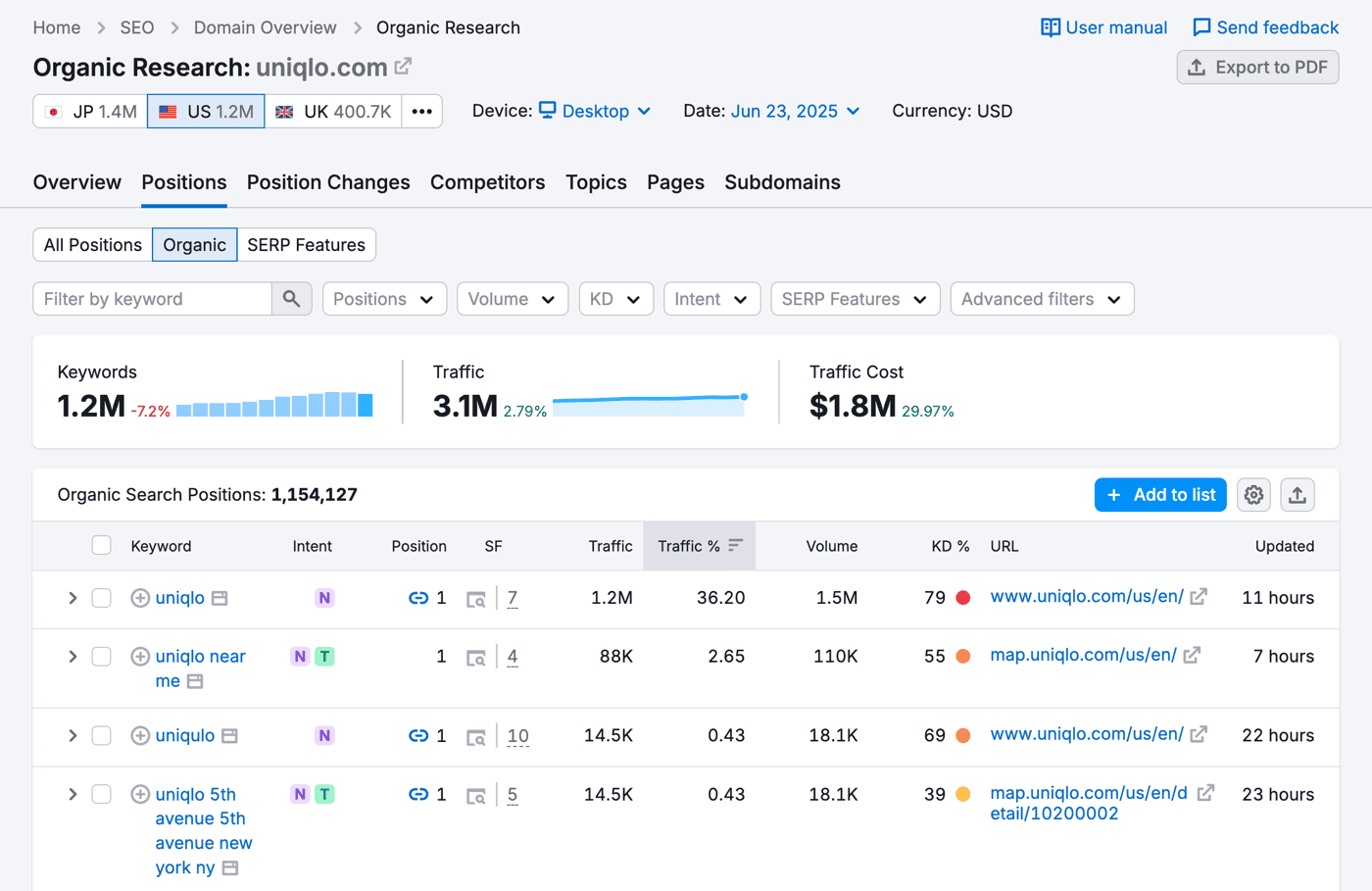
You can search 10 times a day for keywords, competitor data, ranking positions, and backlinks without paying a penny, which gives you a solid basis for content creation and link building outreach.
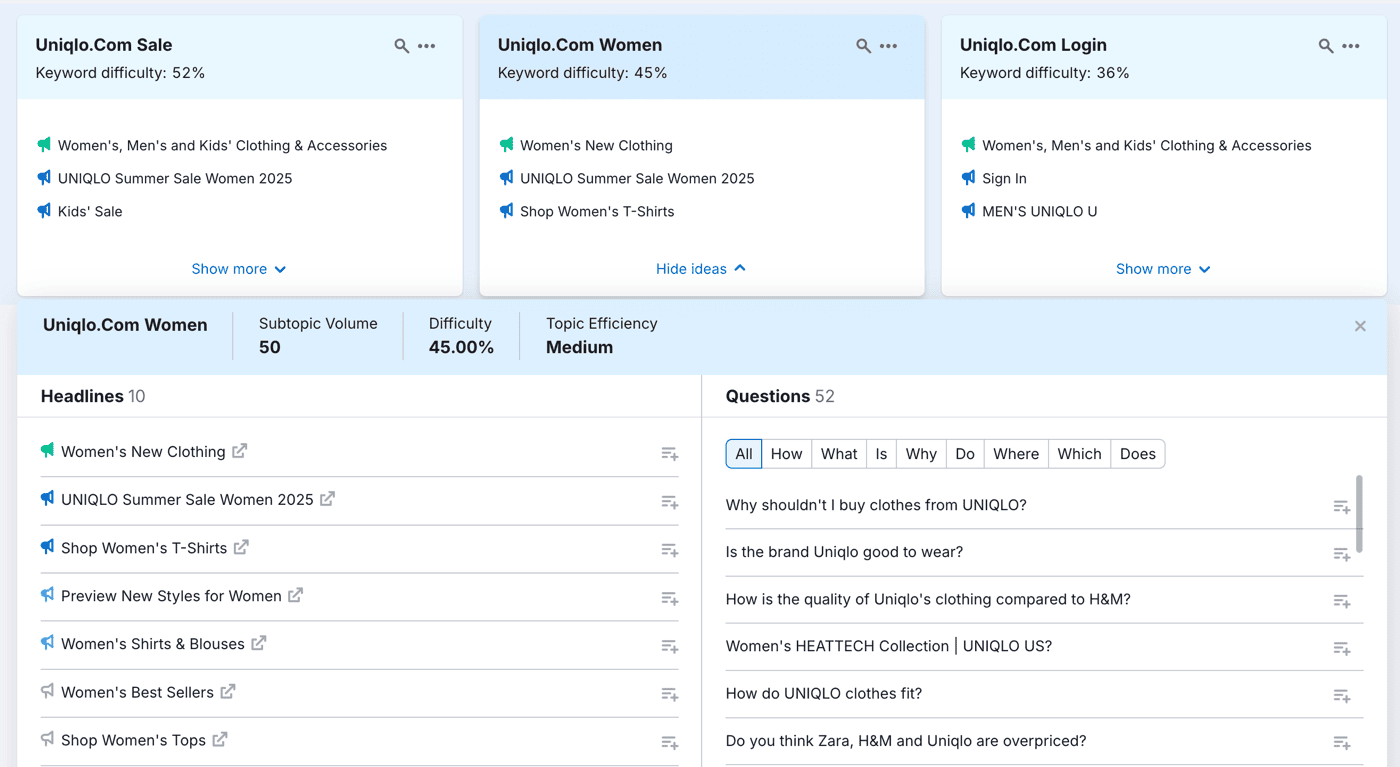
Semrush also lets you audit your website for technical issues for free. There’s a limit on the number of pages it’ll crawl, but a small business website is unlikely to exceed that limit.
There is a free trial of paid features for 7 days, so you can try it out and see if the upgrade would be worth it for your business.
Pros:
- Data from 142+ countries
- Monitor Google, Bing, and ChatGPT search
- Supports PPC, SEO, content, topic research, and technical SEO
Cons:
- Large jump in price from free to paid plan
- Takes time to learn the best workflows
Pricing: Semrush is free for limited use and site audits for up to 100 pages. Paid plans start at $139.95/ month after a 7-day free trial.
Semrush alternatives: Ahrefs, SE Ranking, and AccuRanker
3. Ahrefs Webmaster Tools: Best for Website Analytics
Small businesses need to know how visitors are engaging with content and which webpages generate conversions.
Google Analytics takes a while to learn and can be pretty overwhelming. Ahrefs provides a simple but solid alternative called Web Analytics.
We think of Web Analytics as a user-friendly Google Analytics backup. It’s not quite an alternative; it doesn’t collect as much data as GA. But for the website metrics that matter, it’s perfect.

Ahrefs Site Audits catch technical issues on your website so you can fix them before they impact user experience and conversions. Compared to Semrush, Ahrefs’ Site Audit reports are a little easier for beginners to understand.
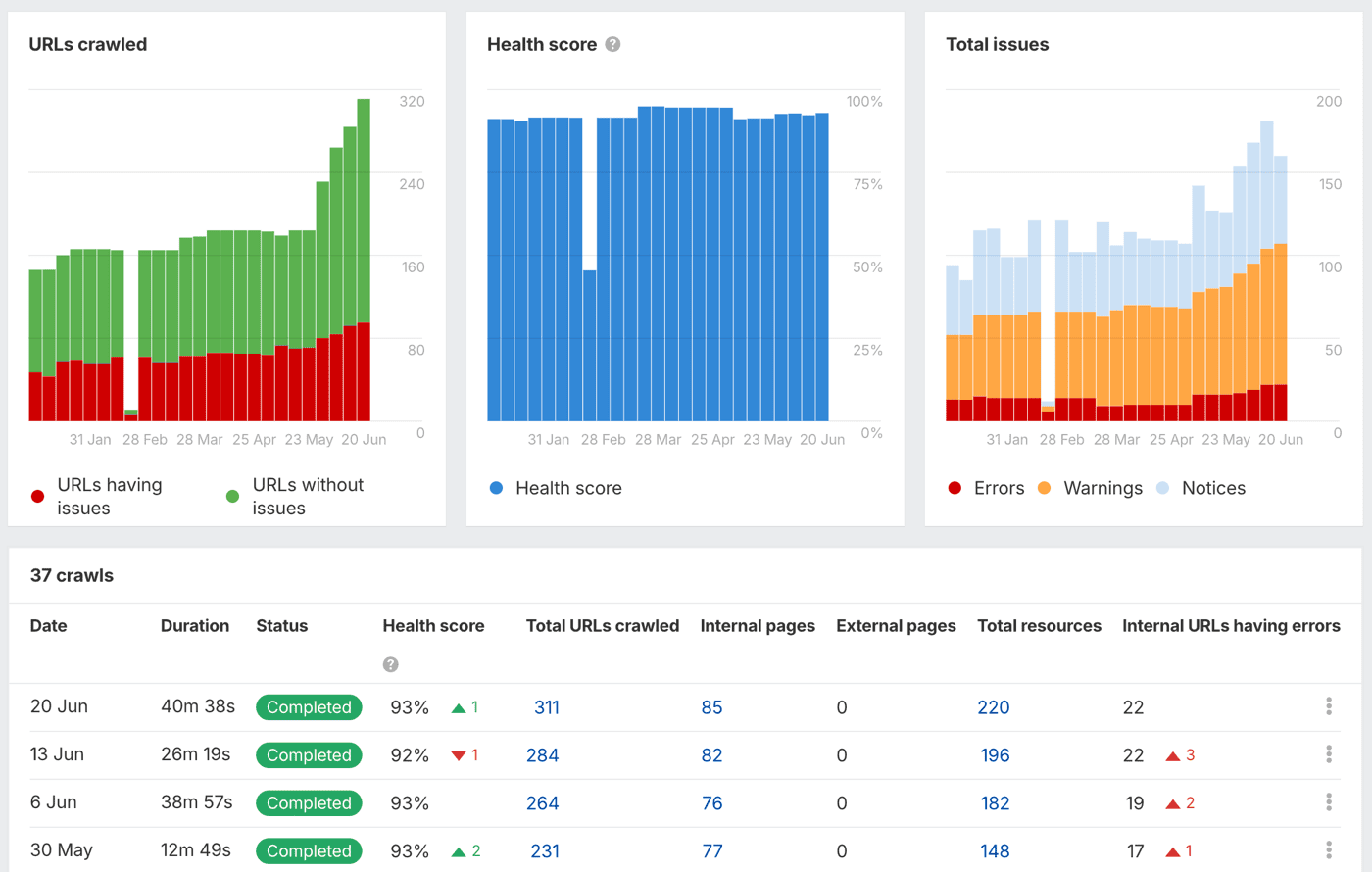
Pros:
- Completely free website tools for small businesses
- Includes key data small businesses need to track
Cons:
- Less data than Google Analytics
- Limited to 1m events per website per month
Pricing: Ahrefs Webmaster Tools is free and includes Analytics, Site Audit, and Site Explorer. If you want to access more tools in the platform, the cheapest upgrade is the $29/ month plan.
Ahrefs Webmaster Tools alternatives: Google Analytics, Matomo, and Piwik Pro
Try Ahrefs Webmaster Tools for free
4. Cursor: Best for Development
If you have an idea for a tool that will convert and build engagement, Cursor is an incredible app that helps you turn sparks of inspiration into real results.
Cursor helps you to code your own websites, apps, and tools with AI. You can get lead magnets and interactive tools up and running in minutes.
Instead of writing code yourself, you can “vibe code” by chatting with Cursor’s Agent. It supports the most recent versions of Claude, Gemini, and ChatGPT.
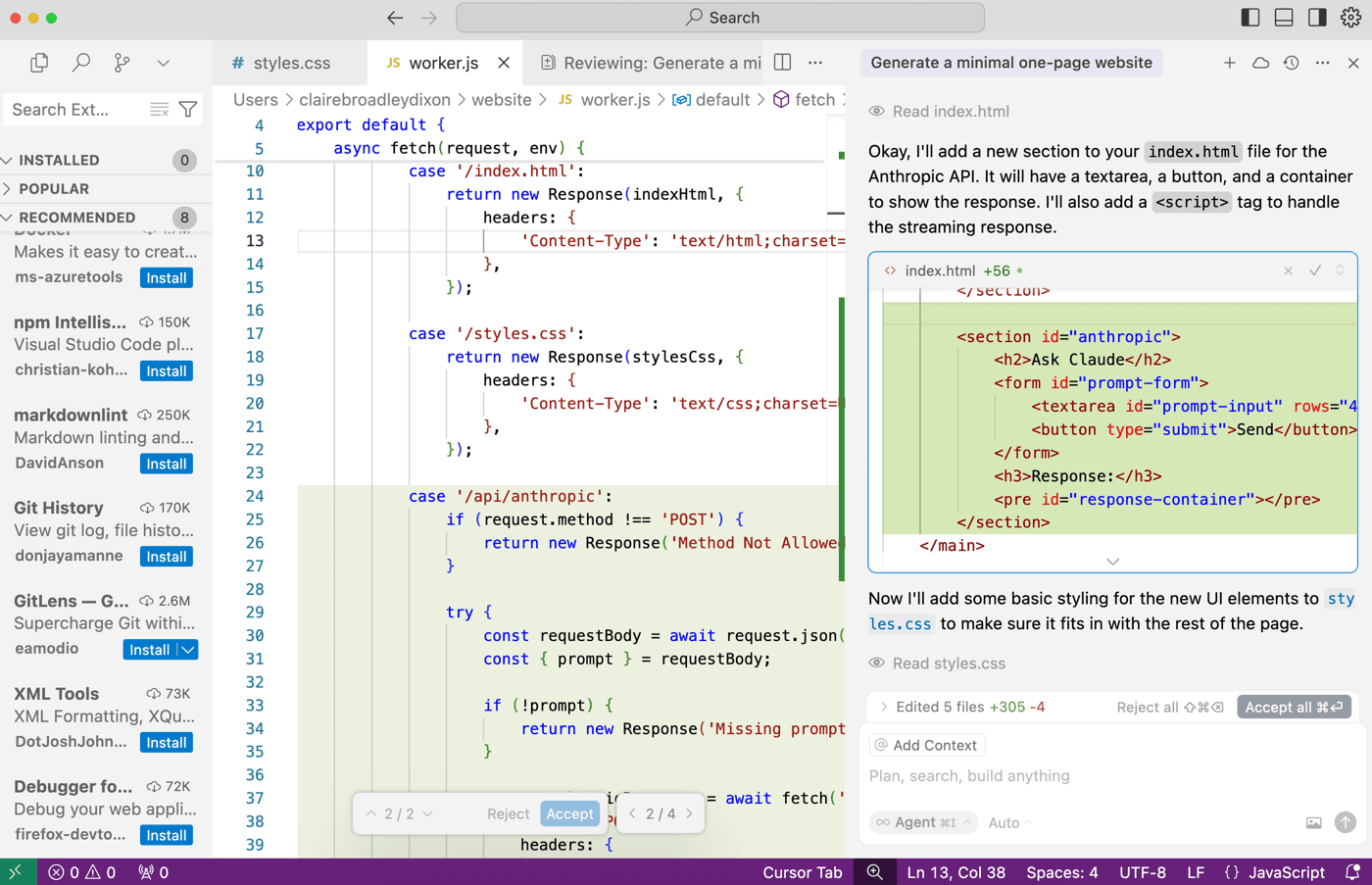
To show you how easy it is, we created a simple website in around 30 seconds with just 1 prompt. To make the most of Cursor, it helps if you’re comfortable reading code, but you don’t need to write it yourself.
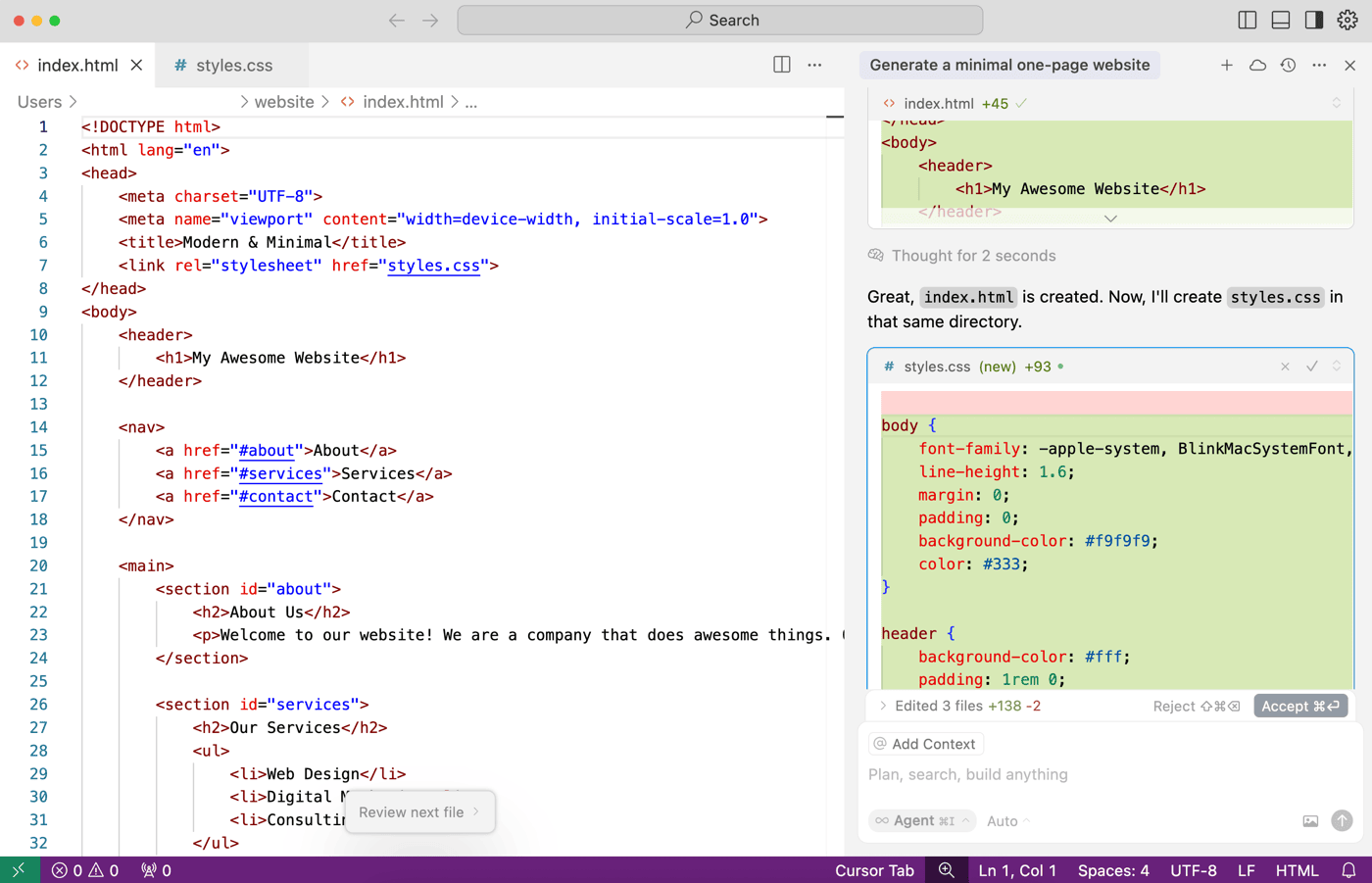
The result is basic, but you can easily customize the code by prompting Cursor to adjust the colors, fonts, and layouts. It’s easy to roll back changes if you don’t like the results.

Managing development costs can be tricky for a small business, and Cursor can cut those costs significantly. In the free trial, you get 500 requests, which is enough to build a small calculator lead magnet or a few new web pages.
You can also bring your own API key, which means you can connect Cursor to an LLM of your choice. However, functionality is limited with an API key. Most features need Cursor’s built-in integrations.
Pros:
- Privacy mode
- Forever free plan
Cons:
- Needs close supervision when editing critical code
- Rate limiting can slow you down
- Basic coding knowledge is helpful
Cursor alternatives: Bolt, Replit, and Claude Code
Pricing: Cursor is free, but with low limits on usage. You can upgrade to Pro for $20/ month to get more fast requests.
5. Napkin.ai: Best for Illustrations
Napkin.ai makes it easy to create diagrams, visuals, and explainer graphics from text. If you’re generating reports or doing original research, this tool will give text content a lift in seconds.
You can use your own data or find some statistics relevant to your products. Just paste it in. Napkin converts the text into beautiful charts and diagrams. You can cycle through different styles and formats until you find one you like.
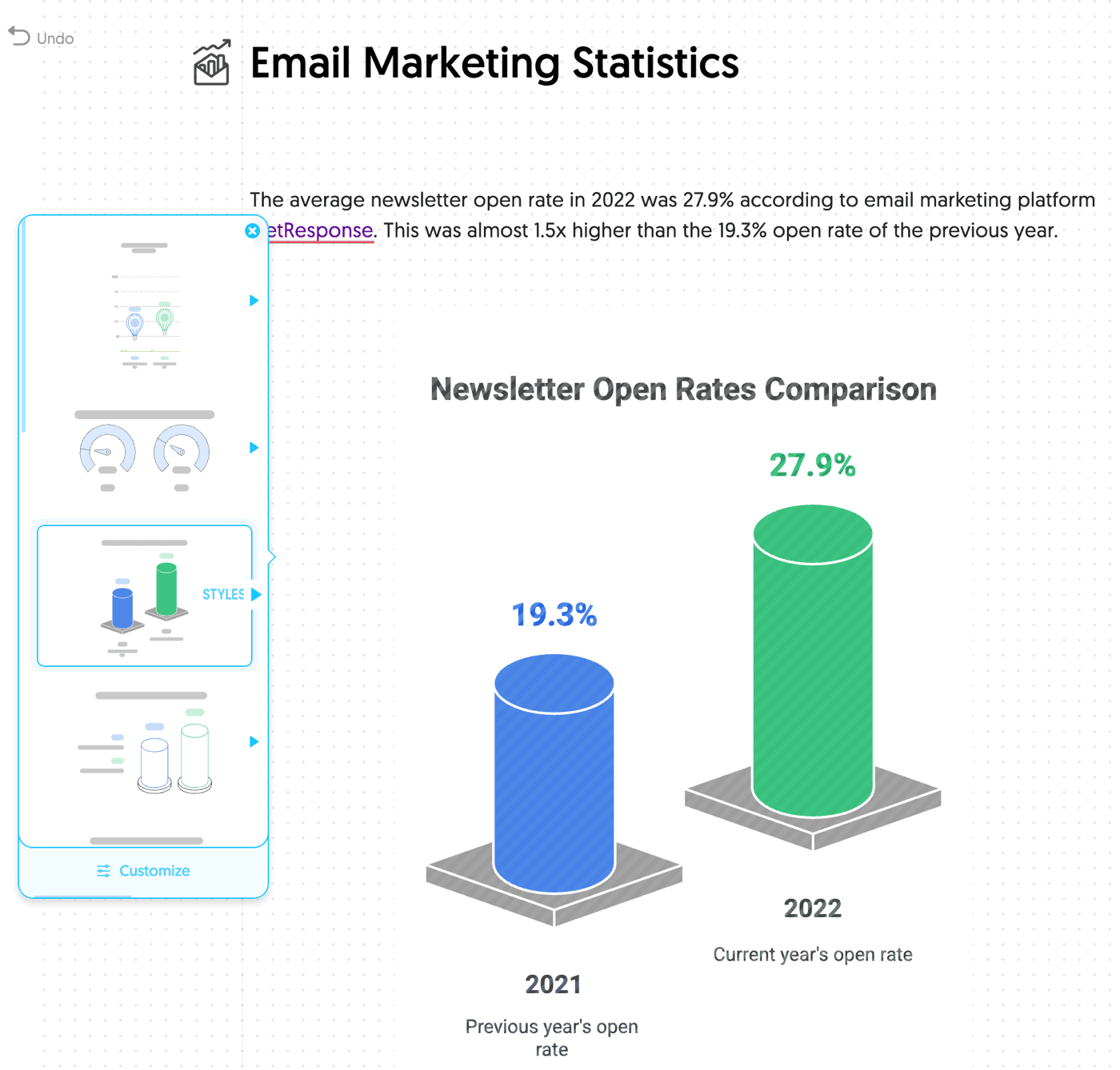
We’ve used Napkin to add illustrations to reports and have been impressed with what we can make for free.
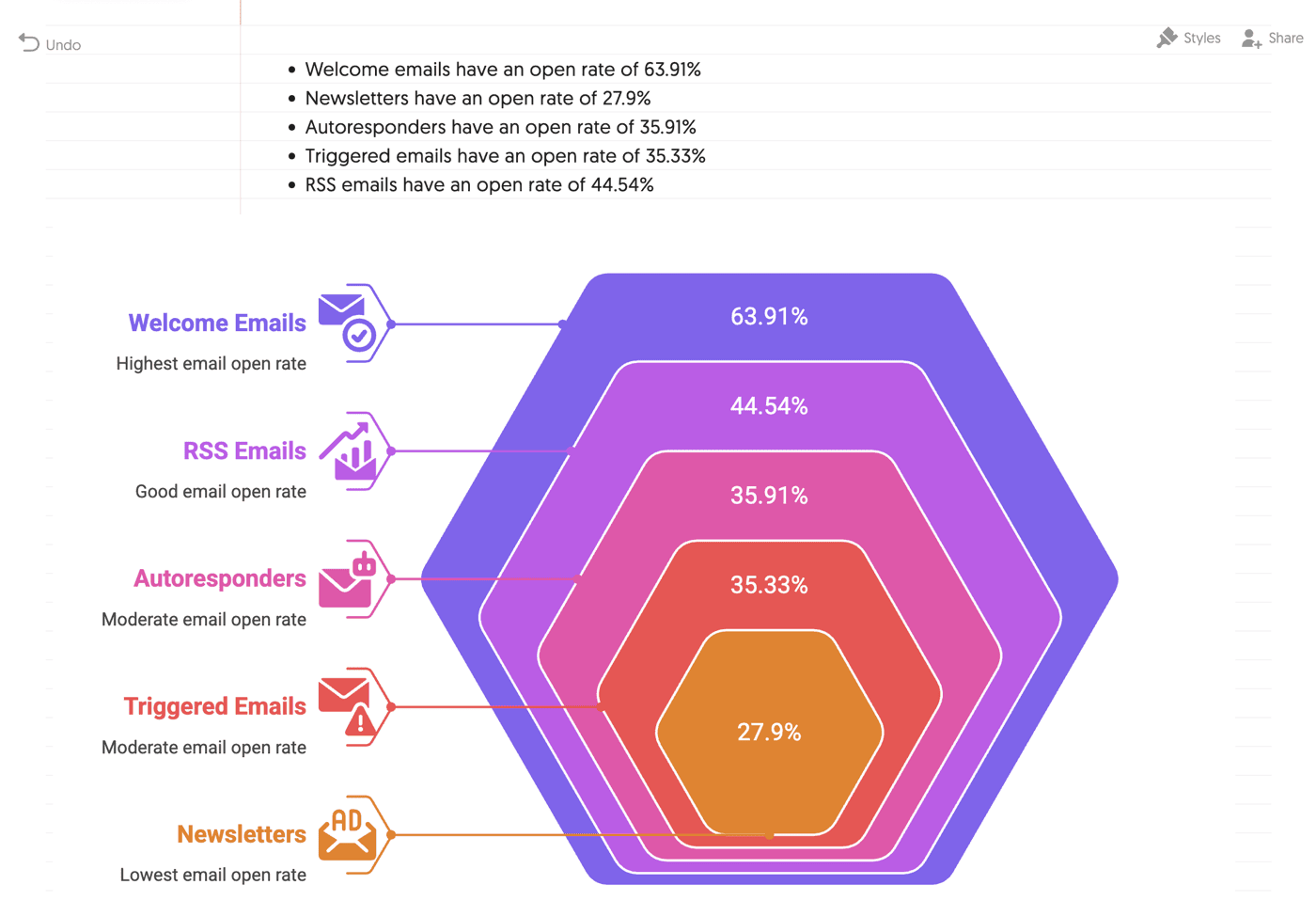
Next time you need to put together a data-heavy piece of content, we recommend you take a look at Napkin. It’s super easy to learn, and fun to use.
Pros:
- Generous free plan and affordable paid plans
- Virtually no learning curve
- Modern, flat designs
Cons:
- Limited customization options
- Free plan shows a napkin.ai badge
Pricing: Napkin.ai is free to use. You get 500 AI credits per week, but your images will be watermarked. Paid plans start at $12/ month for 10,000 credits and custom styles.
Napkin.ai alternatives: Canva, Gamma AI, and Beautiful.ai
6. Gemini: Best For Marketing Content
If you need an LLM to help you with marketing copy, reports, and social media posts, ChatGPT is probably the tool you think of first.
For small businesses, we think Gemini may be a better choice because it integrates with other Google products.
For basic tasks, you can use Gemini like a chatbot. We like the Deep Research feature that helps speed up content creation.
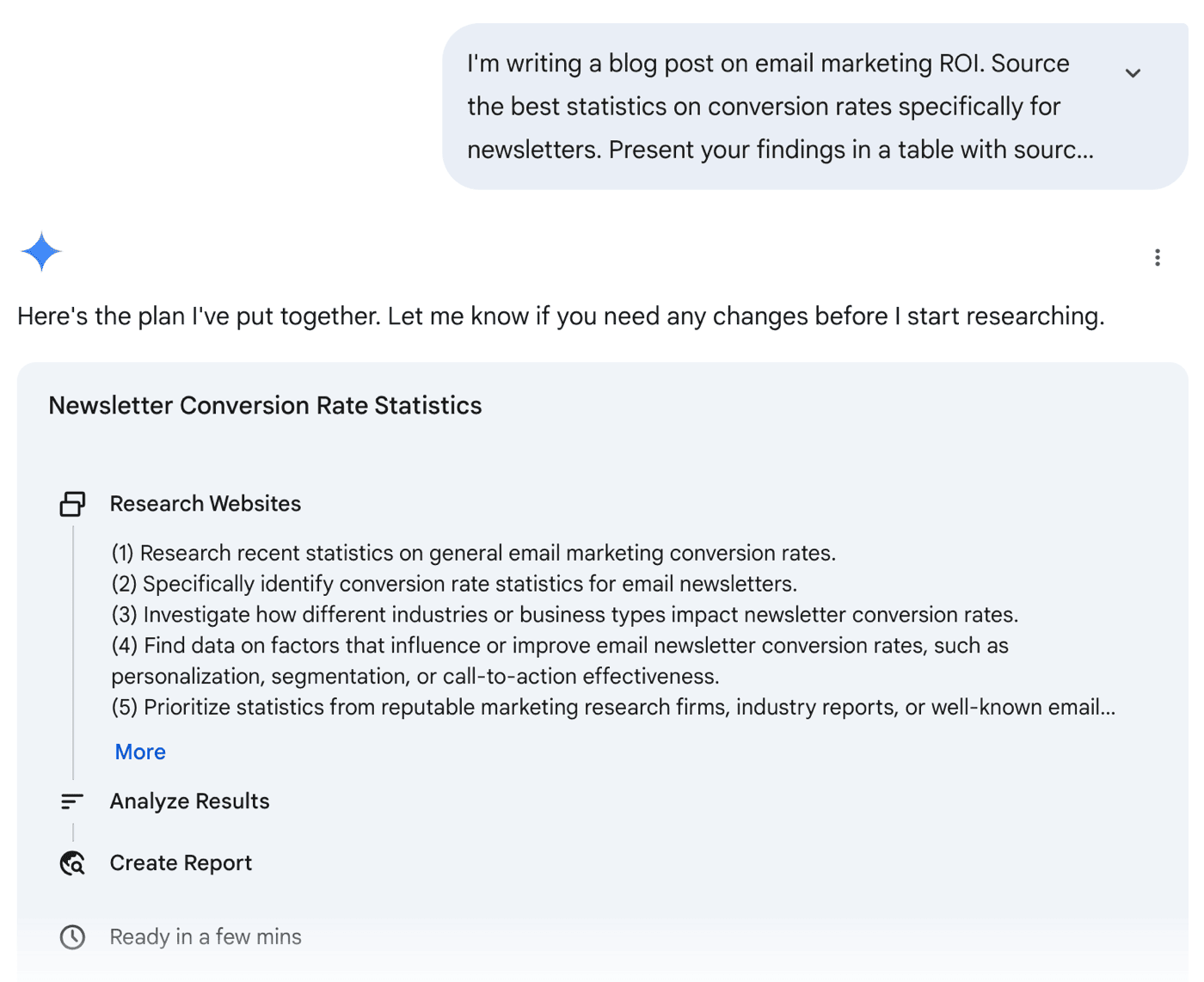
If your small business pays for Workspace, you can use it inside Google Docs, Sheets, and Slides if you pay for the Starter plan. Gemini can suggest better phrasing for marketing copy and revise your text.
Gemini also has a large context window, which means it can process a large amount of content without losing track of what you’ve asked it to do. You can also create Gems, which are saved prompts for marketing tasks that you need to repeat.
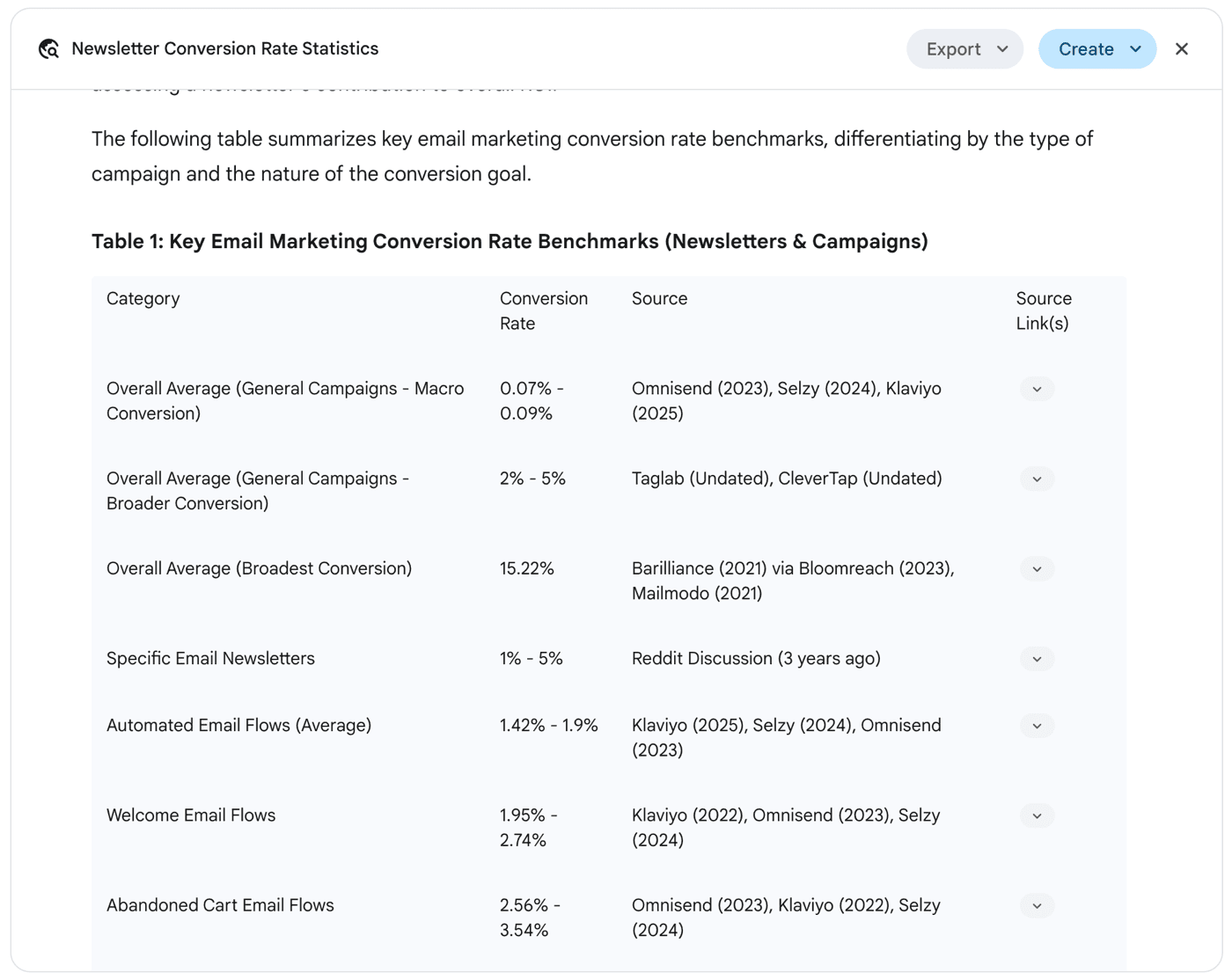
If you pay for Gemini, we highly recommend that you check out Imagen 4 and Veo 3, which are included. Veo 3 can create realistic marketing videos with audio for your social media marketing campaigns.
Pros:
- Free with any Gmail account
- Large context window
- Native Workspace integration for business tasks
Cons:
- Pricing plans are confusing
- No Projects feature like Claude/ ChatGPT
Pricing: Gemini is free to use and provides you with access to 2.5 Flash, Imagen 3, and Deep Research. For advanced features like Veo 3 and the latest 2.5 Pro model, you’ll need to purchase Google AI Pro, which starts at around €22 per month (price varies by country). For business features like the Gemini AI meeting assistant, you’ll need to pay for a Workspace plan.
Gemini alternatives: Claude, ChatGPT, and DeepSeek
7. Canva: Best Design Tool
For quick social media graphics, charts, and AI-generated illustrations, Canva is the go-to platform for over 200 million people.
You don’t need any design skills at all to use Canva. The massive range of pre-made templates means you’re never stuck for inspiration. We’ve used it to make everything from data-driven charts to eye-catching AI videos.
Just type a prompt and Canva gets to work on designing your marketing assets for you.

As you perfect your design, just chat with Canva to tweak it until you get the result you want.
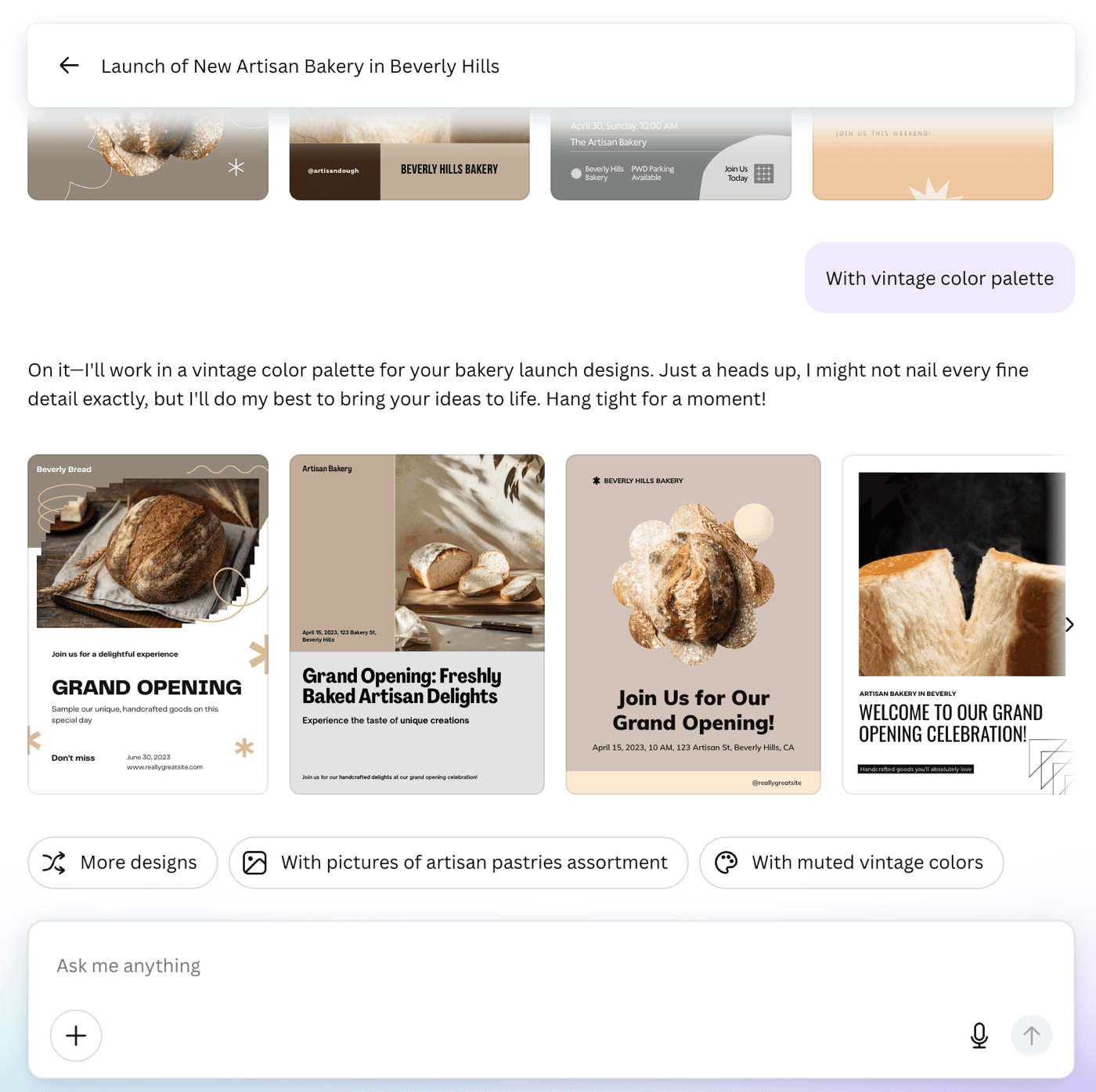
AI tools like Runway and Imagen are directly integrated in Canva Pro. And you can set up brand colors and fonts in Brand Kits, which is super helpful when you’re working with freelancers.
It feels like Canva has really tried to make this a one-stop-shop for small business marketing. It’s a super affordable tool considering how much value you’ll get.
Pros:
- Huge library of templates, fonts, and stock photos
- Easy to create and share designs
- Extensive AI features
Cons:
- Some templates can look generic
- Interface sometimes feels cluttered
Pricing: Canva is free to use and includes templates, pre-made designs, stock photos, and limited AI features. Upgrade to Pro or Teams to unlock background removal and more sophisticated AI tools. Pricing is around €12-15 per month (country specific).
Canva alternatives: Pixlr, Adobe Express, and VistaCreate
8. HubSpot: Best CRM Platform
While your business is still small, set up HubSpot CRM and start capturing leads that you can nurture.
HubSpot is a CRM that helps you to store information on prospective customers and drive marketing campaigns. You can create lead gen landing pages, funnels, and invoices. It’s our favorite free CRM platform, and you can use it for 1,000 contacts and 2,000 sent emails completely free, and there’s an AI assistant to help you create text.
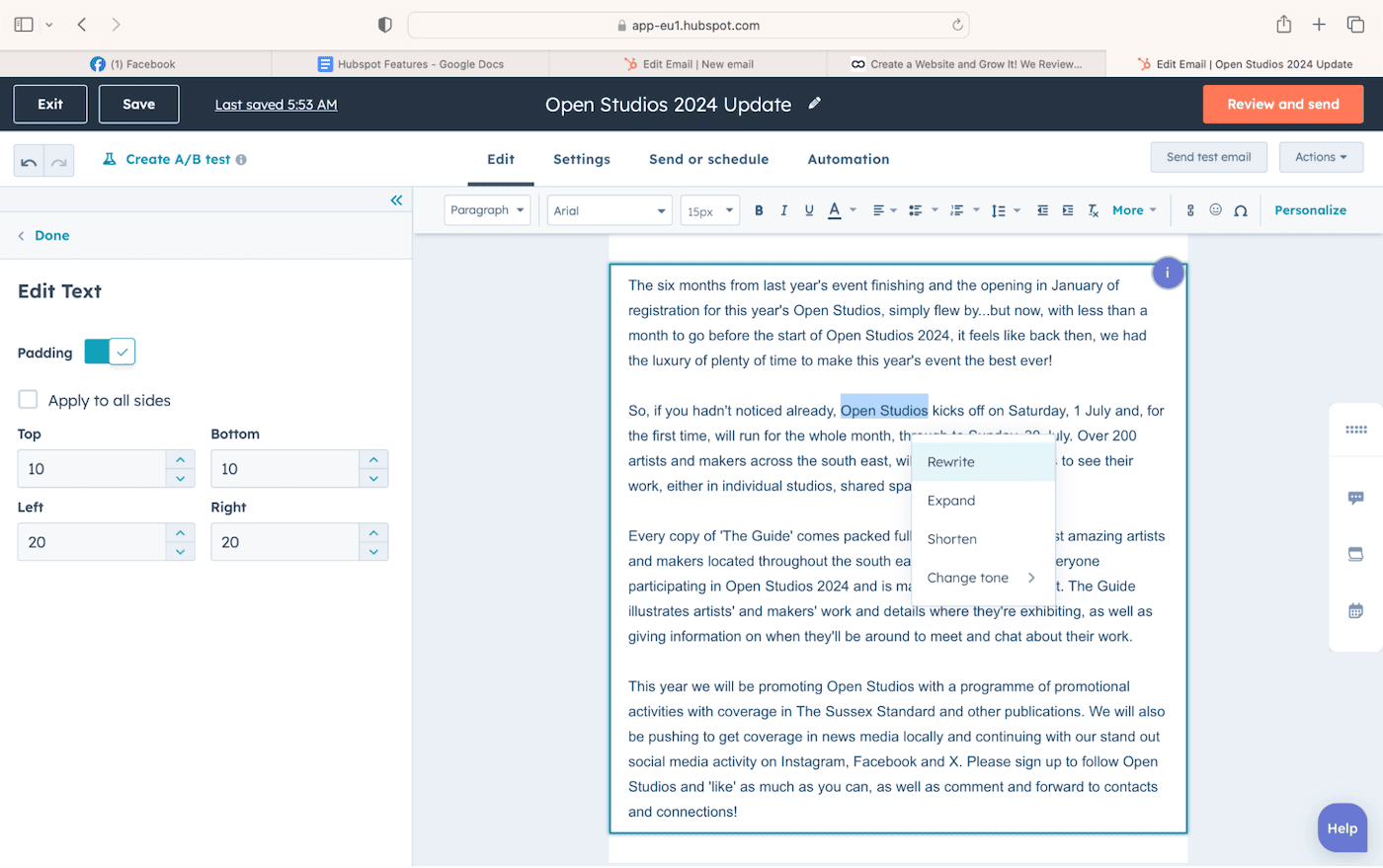
As your business gets larger, you’ll be glad to have everyone’s details in one place. You can move on to automating communications with customers to reengage them and drive repeat sales.
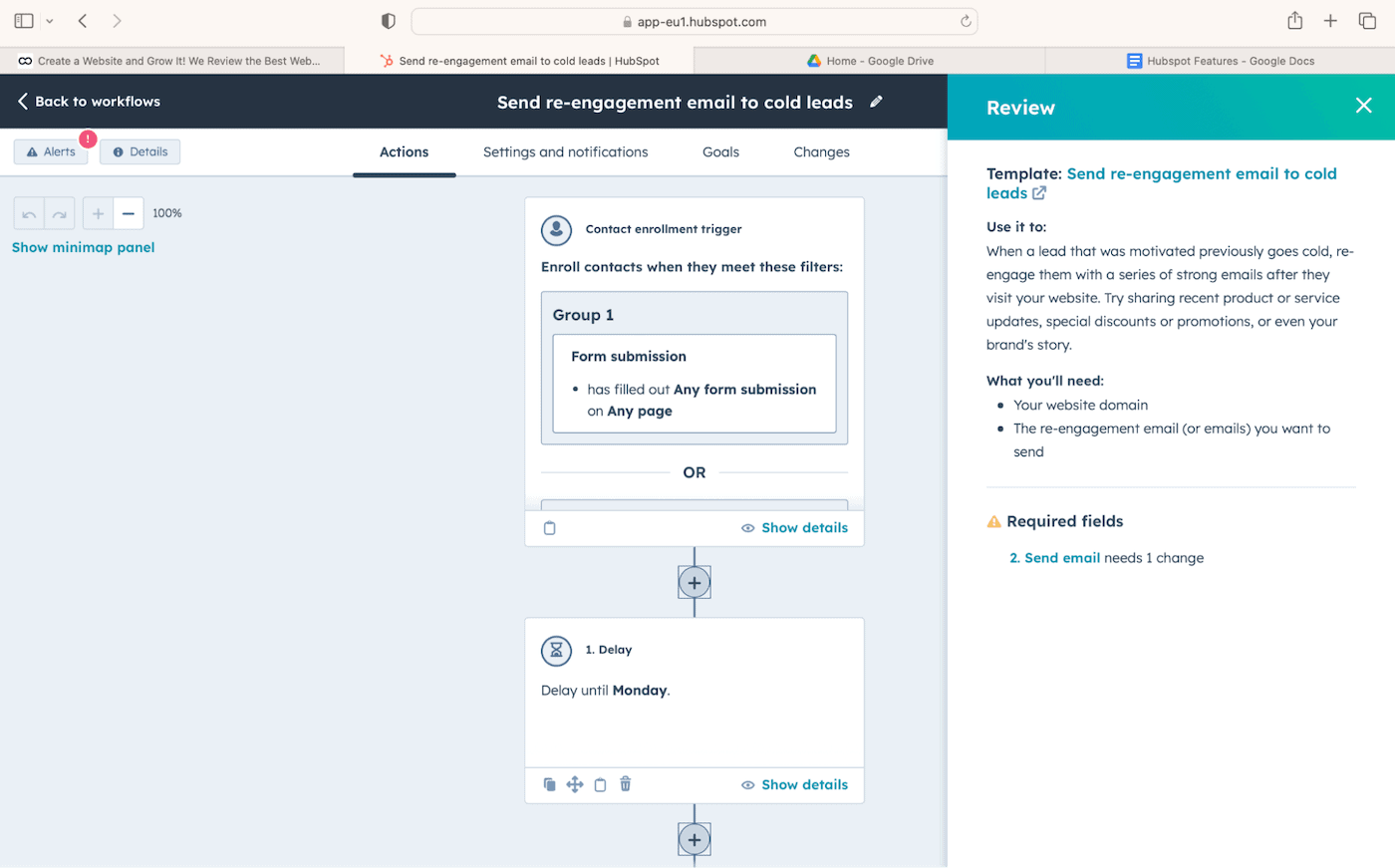
We found some areas in HubSpot where you’ll need to compromise. You can’t add multiple email addresses to contacts, for example, and the reporting isn’t the best. But it has become more or less industry-standard and is definitely a helpful small business tool for startups.
Pros:
- Great for small businesses that scale quickly
- Access to many interconnected tools
- Resources and online courses
Cons:
- Can be expensive for multiple users
- Most headline and AI features are paywalled
Pricing: HubSpot CRM is free for 2 users with limits on usage and basic access. Paid plans start at €15/ month for the Starter Customer Platform, which unlocks all tools in the Marketing Hub.
HubSpot alternatives: Zoho CRM, Salesforce, and PipeDrive
9. Buffer: Best Social Media Management Tool
If your target market skews younger, an investment in social media now could pay dividends. But managing multiple channels yourself can take a lot of time.
Buffer makes it easy to automate social media posting for your small business. While some social media platforms have complex posting options, Buffer does a good job of simplifying everything.
We really like the AI Assistant, which generates social media posts for you.
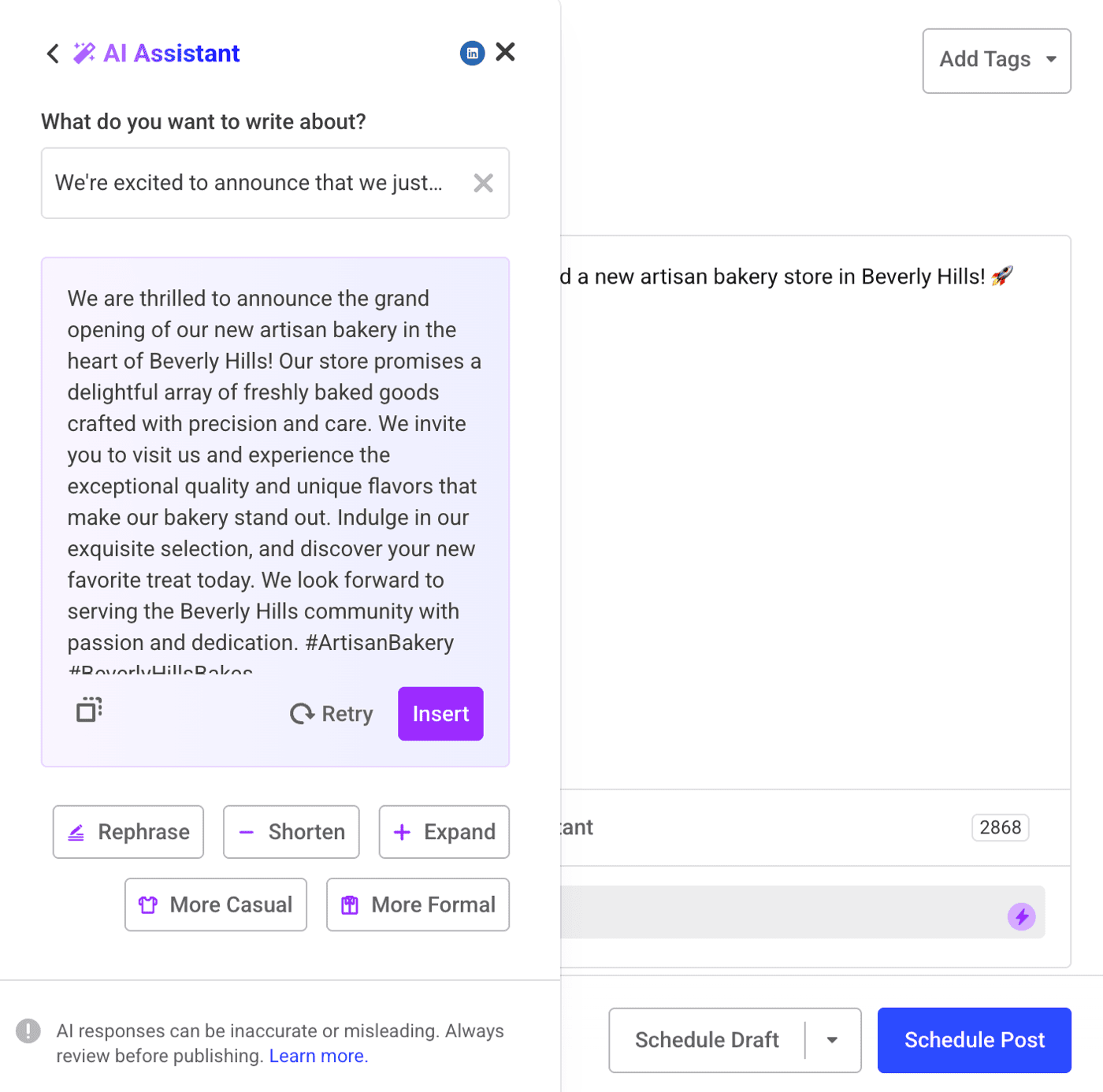
Its scheduling features are excellent, and the calendar is easy to adjust if you need to move posts around.

Pros:
- Great interface
- Scheduling tools are the best we’ve tried
- AI writer is super helpful
Cons:
- Costly if you have many social media accounts
- Low limit on free plan
Pricing: Buffer is free for 3 marketing channels (social media accounts) with 10 scheduled posts each. Essentials starts at $5 per additional channel.
Buffer alternatives: Publer, HootSuite, and Sprout Social
10. MailerLite: Best Email Marketing Tool
Small businesses can generate up to 3,600% ROI from email marketing. The sooner you start, the faster you’ll see returns.
MailerLite is a great tool for small business marketing. We love the drag-and-drop email builder and templates. You can create professional emails quickly, even if you’re new to marketing, and start generating sales right away.
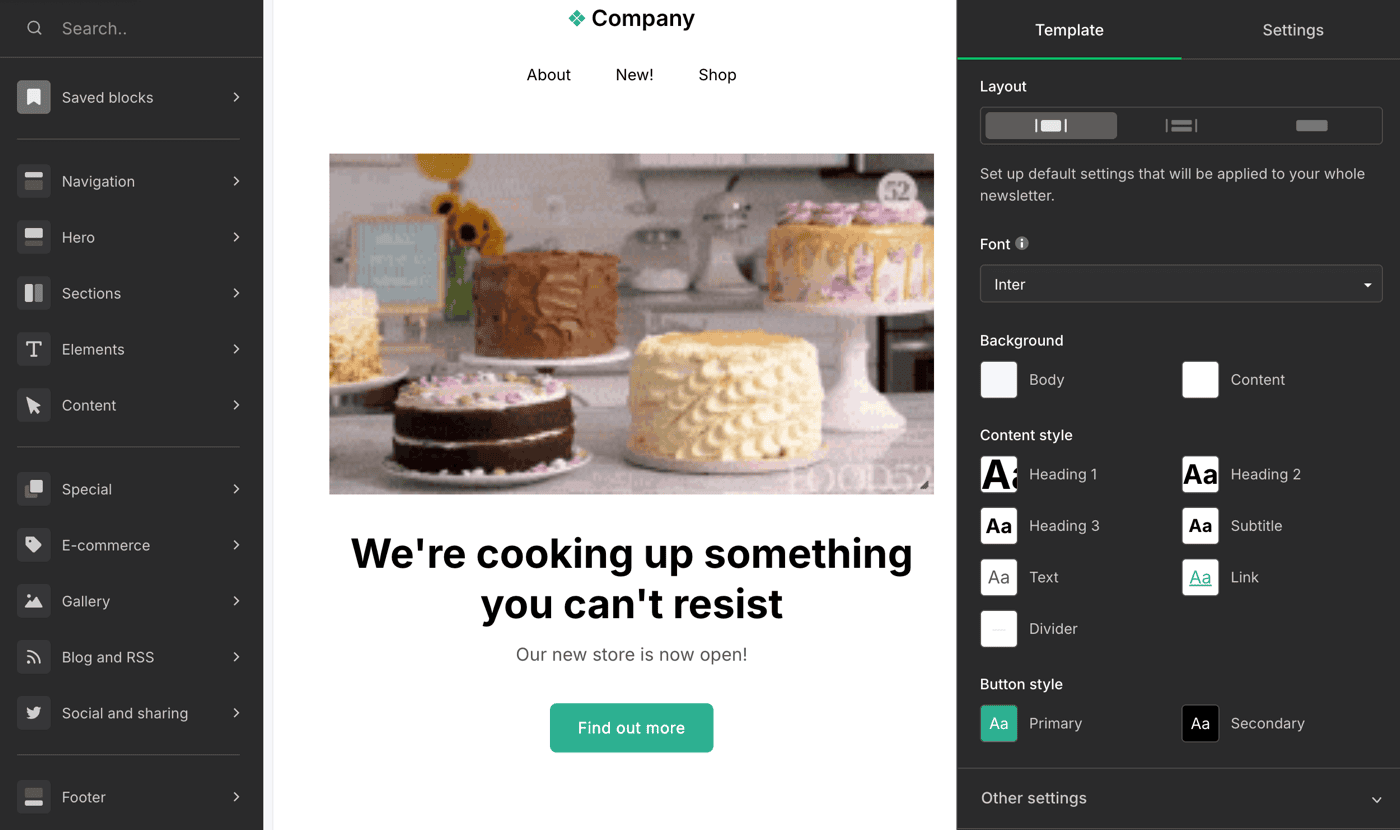
It’s easy to make opt-in forms and popups without writing any code.
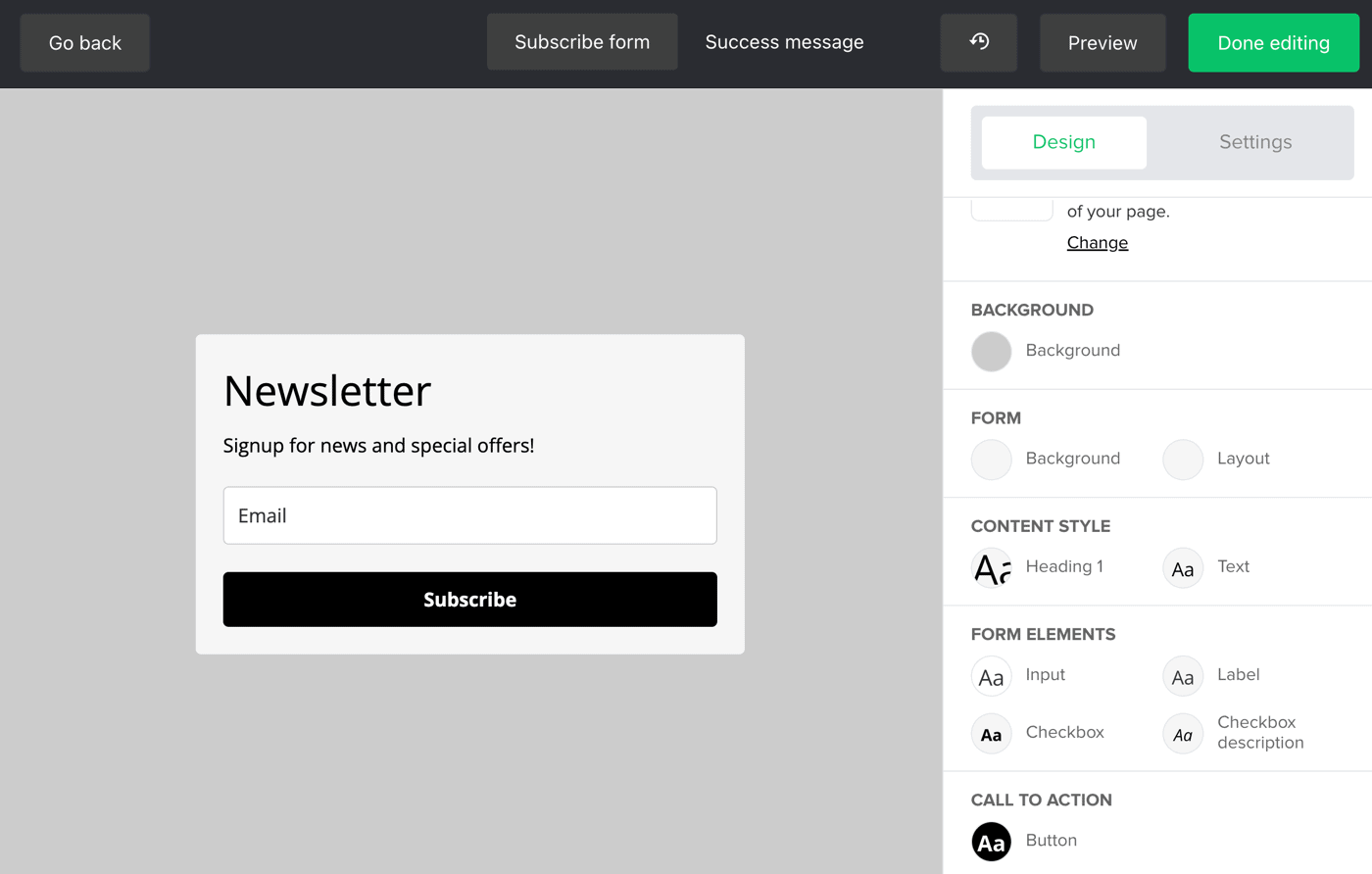
MailerLite doesn’t have some of the advanced features that other platforms support, but the generous plans and low cost make it a solid choice for small business marketing. Check out the detailed MailerLite review on our sister website to see how we rated it.
Pros:
- Generous free plan
- Plenty of templates
- GDPR features
Cons:
- Costs increase for large lists
- Reporting is basic
Pricing: MailerLite is free for up to 1,000 subscribers and 12,000 emails each month. Paid plans start at $10 per month.
MailerLite alternatives: Kit, ActiveCampaign, and Brevo
11. CleanShot X: Best For Product Images
If you’re selling software, clear screenshots are vital. Buyers want to know the benefits of your product, and they want to quickly understand how it works.
We picked CleanShot X because it’s the best screenshot tool for small business marketing. Many screenshot apps are clunky and basic, but CleanShot X has a beautiful interface that feels very Mac-native. There’s virtually no learning curve, either.
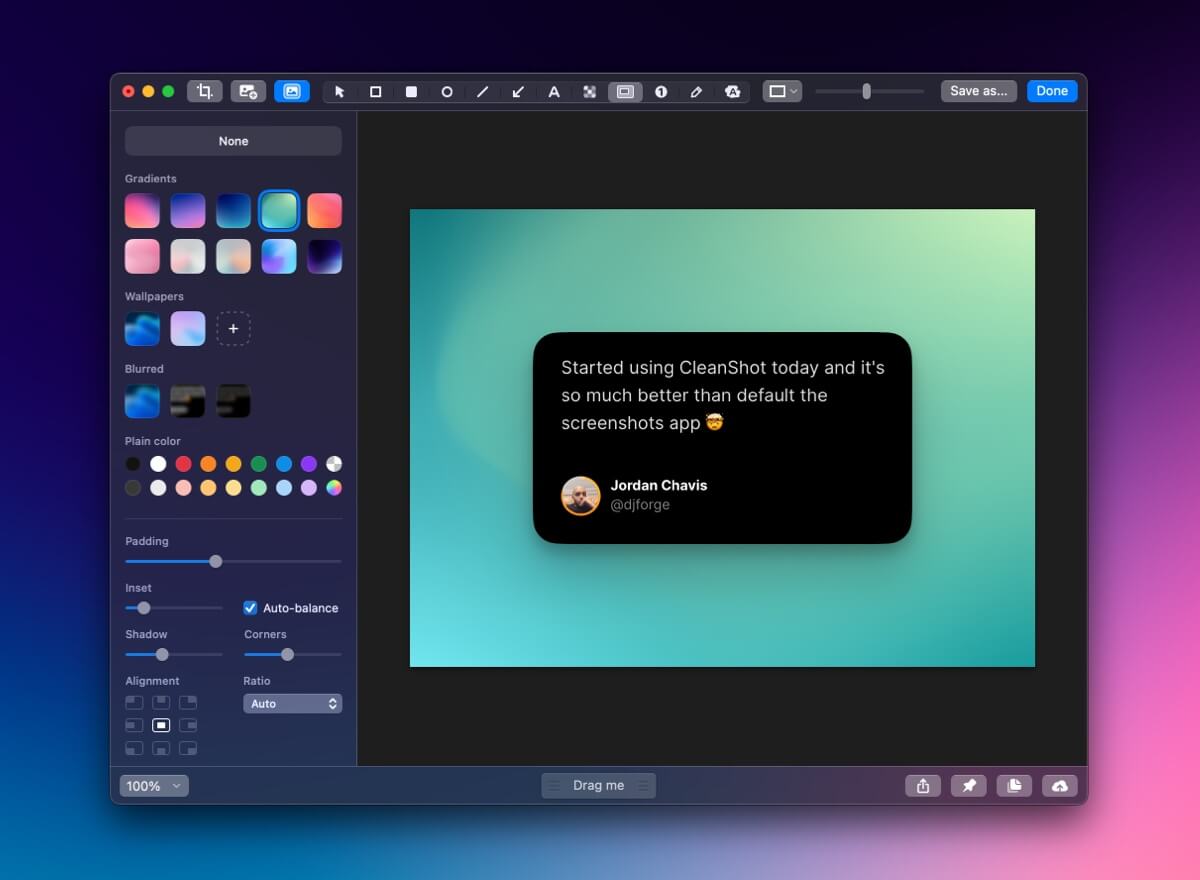
You can annotate images, make videos (with webcam recording), and create full-page screenshots with its scrolling capture feature. It makes the most of the Mac Retina display to ensure all of your screenshots are crystal clear.
If you pay monthly, you can also snap and share videos or screenshots by copying a share link. If a client is on the edge of converting, a quick video explainer could be enough to get you the sale.

Pros:
- One-off cost for the desktop software
- Cloud subscription pricing is competitive
- Great interface
Cons:
- CleanShot X is Mac-only
- Cloud storage is limited to 1GB
- If you work on multiple computers, you’ll need additional licenses
Pricing: CleanShot costs $29 for the app without sharing. If you want the cloud storage, Cloud Pro costs $8/ month.
CleanShot X alternatives: Loom, JumpShare, and SnagIt
12. SparkToro: Best Audience Research Tool
Customers need to notice you across multiple touchpoints before making a purchase. If you know what kind of content they consume, you can increase visibility and raise awareness of your products.
SparkToro makes it easy to get data about your customers or your competitors’. It shows you where they spend their time online, how they search, and what kind of content they consume. That helps you to create a marketing strategy to reach them.
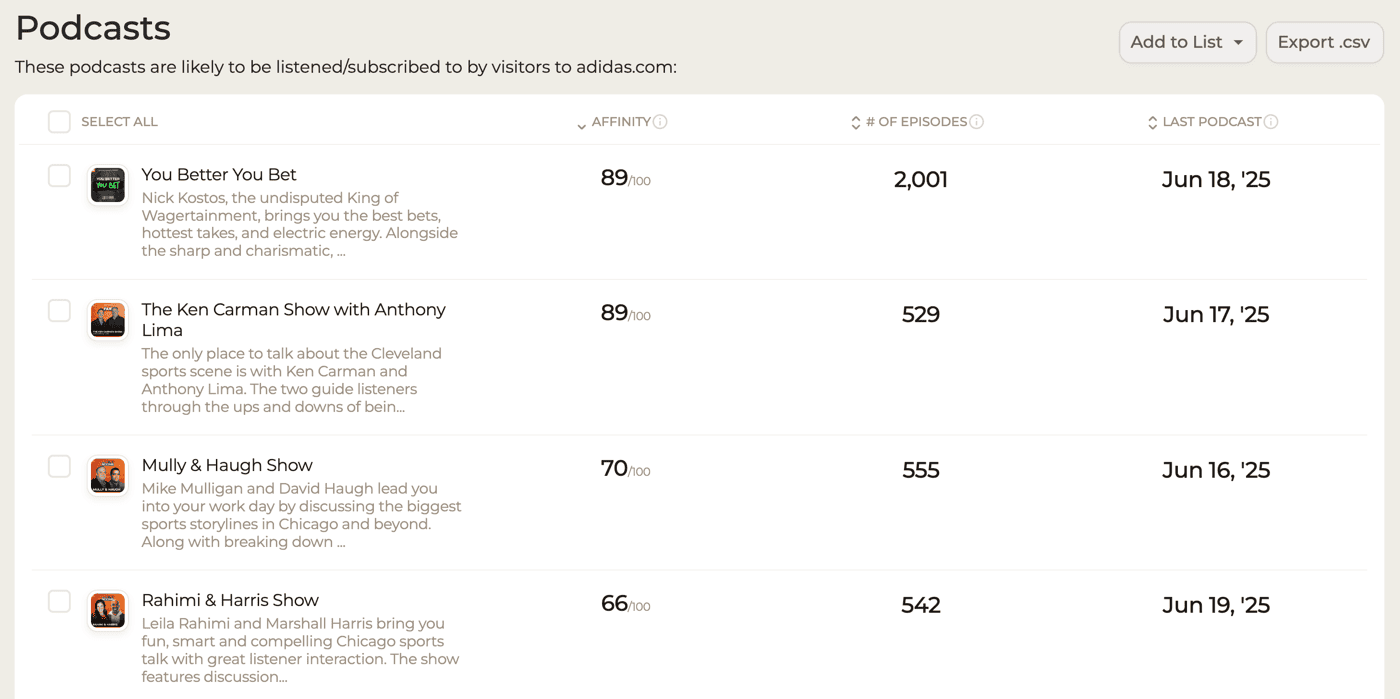
You can also find out which search and AI tools your customers use. This data could help you to adapt your strategy by optimizing your content for the right platforms.
For example, if your audience is likely to use ChatGPT, you can steer your marketing towards optimizing for AI search. This will give you a first-mover advantage over your competitors.
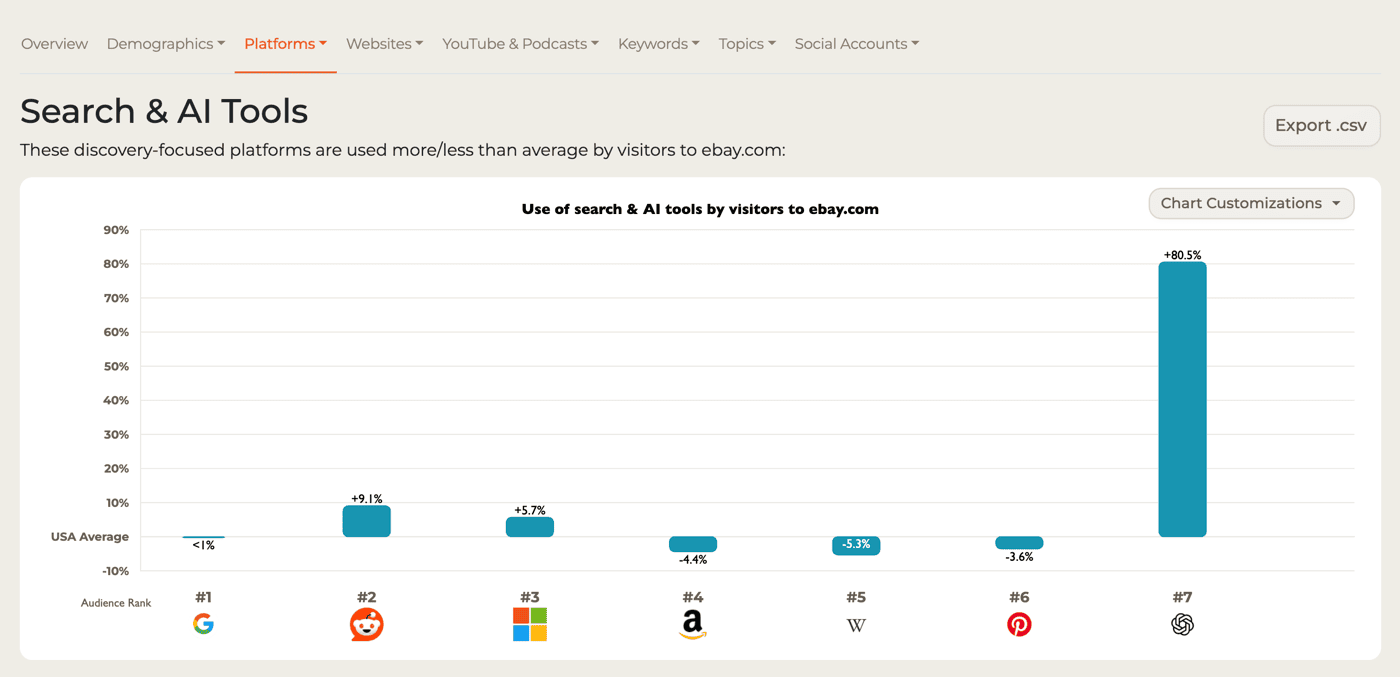
Pros:
- Uncover audience data that other platforms don’t offer
- Perfect for content marketing campaigns when ROI really matters
- Export data for use in other platforms or LLM analysis
Cons:
- Expensive for occasional use
- Limited to English-speaking audiences
Pricing: SparkToro is free for 5 searches each month and limited access to the platform. Paid plans start at $38/ month for 50 searches, which also unlocks demographic data.
SparkToro alternatives: BuzzSumo, BrandWatch, and SimilarWeb
13. Slack: Best For Collaboration
More than 41% of businesses use instant messaging tools. Once you employ marketing staff or hire freelancers, keeping everyone on the same page will save you money and time.
Slack is built for efficient business communication in remote teams. The primary tool is Channels, which are dedicated chat spaces for projects or teams.
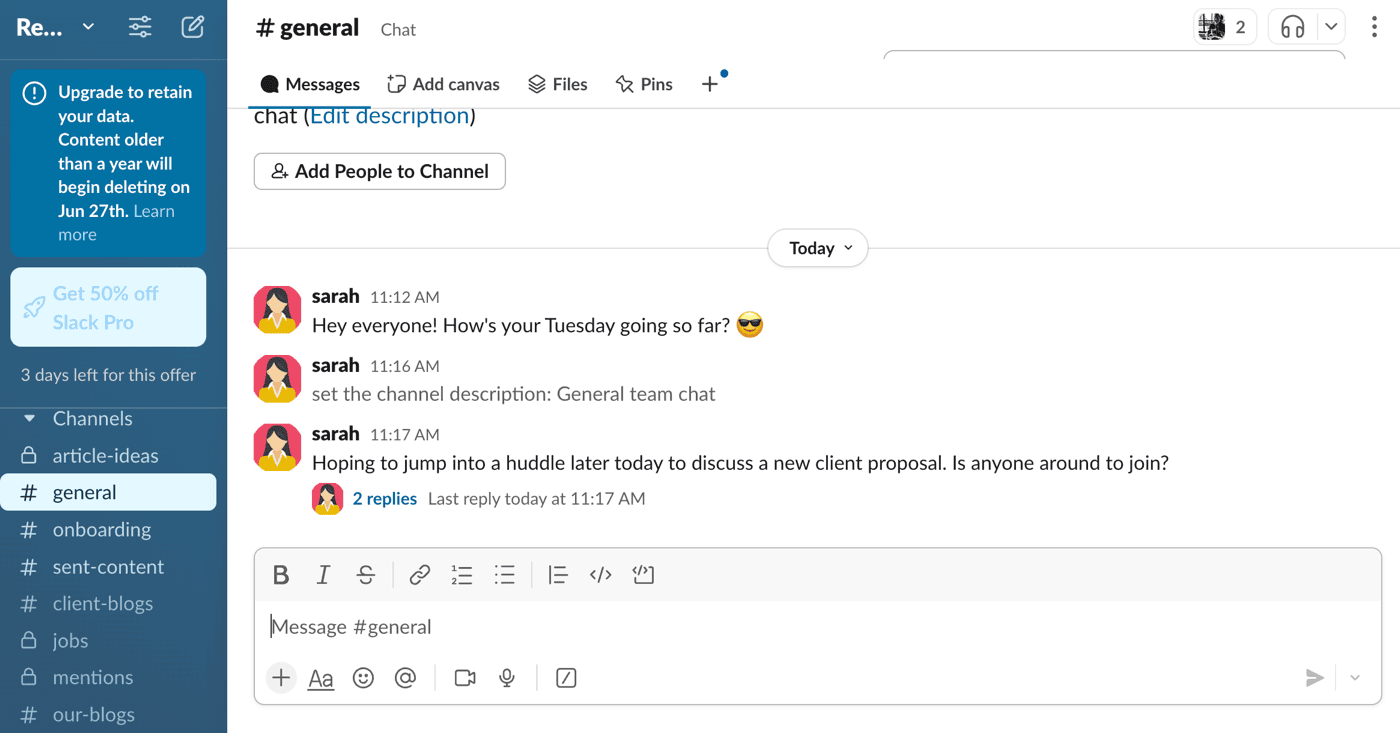
Private channels allow you to lock down access for specific people, which is perfect if you want to create a space to speak with clients. And you can hop into 1:1 video calls when you need to talk face-to-face.

Pros:
- Unlimited free users
- Familiar tool for freelancers and clients
- No time limit on the free plan
Cons:
- No group video calls on the free plan
- Paid plans become expensive as your team grows
- Limited data storage and message retention on the free plan
Pricing: Slack is free with basic functionality and limited storage. If you choose to pay for Slack Pro, pricing starts at $8.75 per active user per month.
Slack alternatives: Discord, Microsoft Teams, and Google Chat
Which Small Business Marketing Software is Most Important?
So that’s our list of top small business marketing tools. Time is limited, so what should you prioritize first? Here are our recommendations:
If you need the best small business tools on a budget, focus on ROI.
- Sign up for MailerLite and HubSpot today. The sooner you capture leads, the faster you can convert them.
- Next, get a free SparkToro account and install Ahrefs’ analytics tools to gather data about your audience.
If rapid growth is important, it’s time for bigger campaigns and automation.
- Semrush is a great all-in-one marketing platform for small businesses.
- Zapier will free up your time as a founder.
The other tools we mentioned will build on those foundations.
For the best small business tools and tips, sign up for the Tooltester newsletter today. Each email we send is packed with value to help you grow and succeed on your business journey:
THE BEHIND THE SCENES OF THIS BLOG
This article has been written and researched following a precise methodology.
Our methodology


